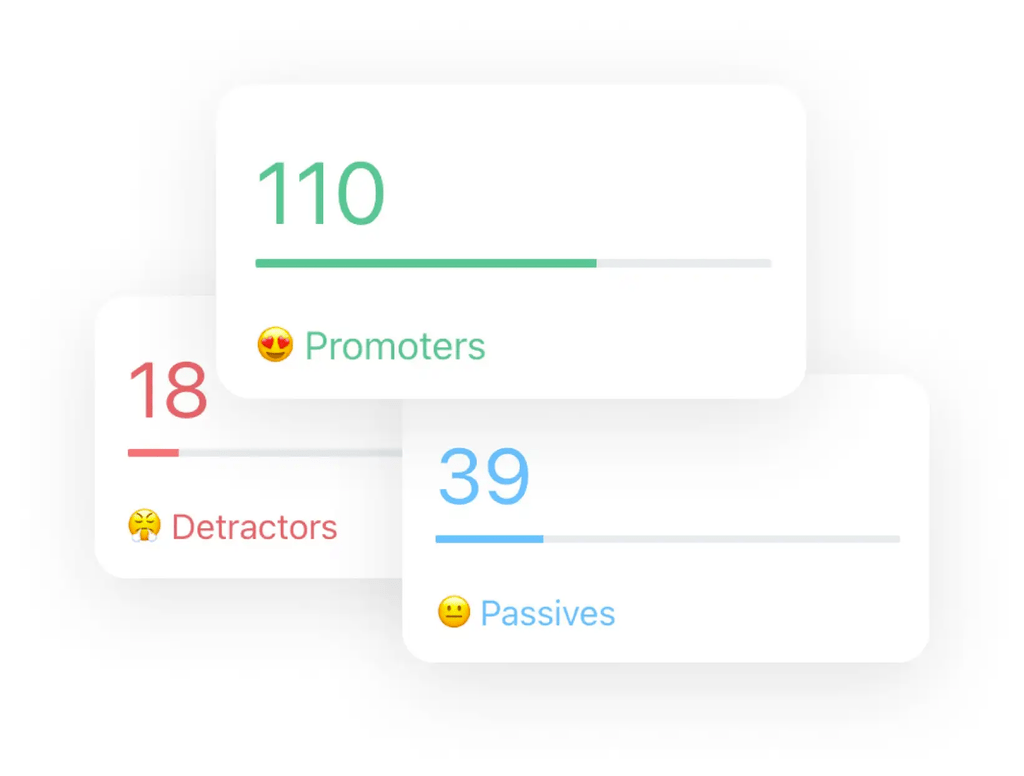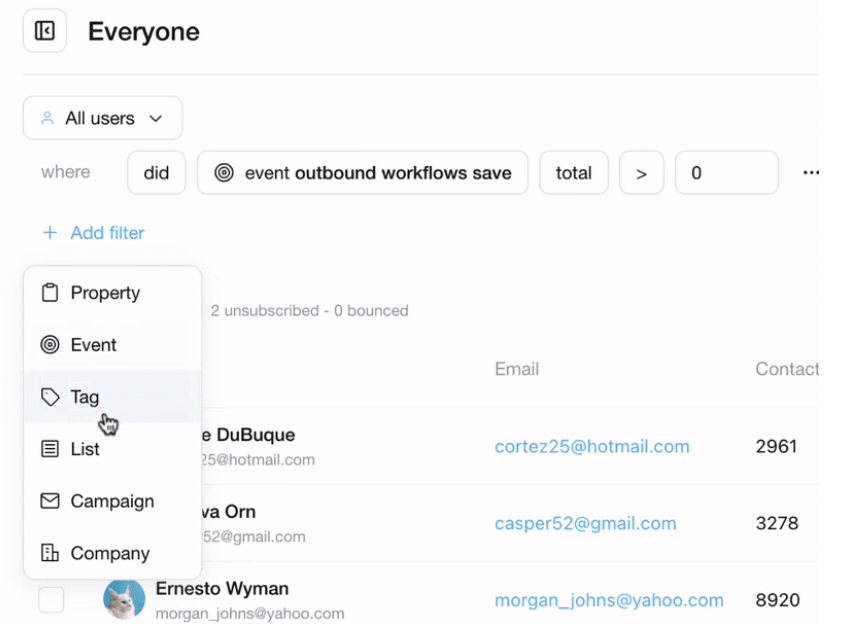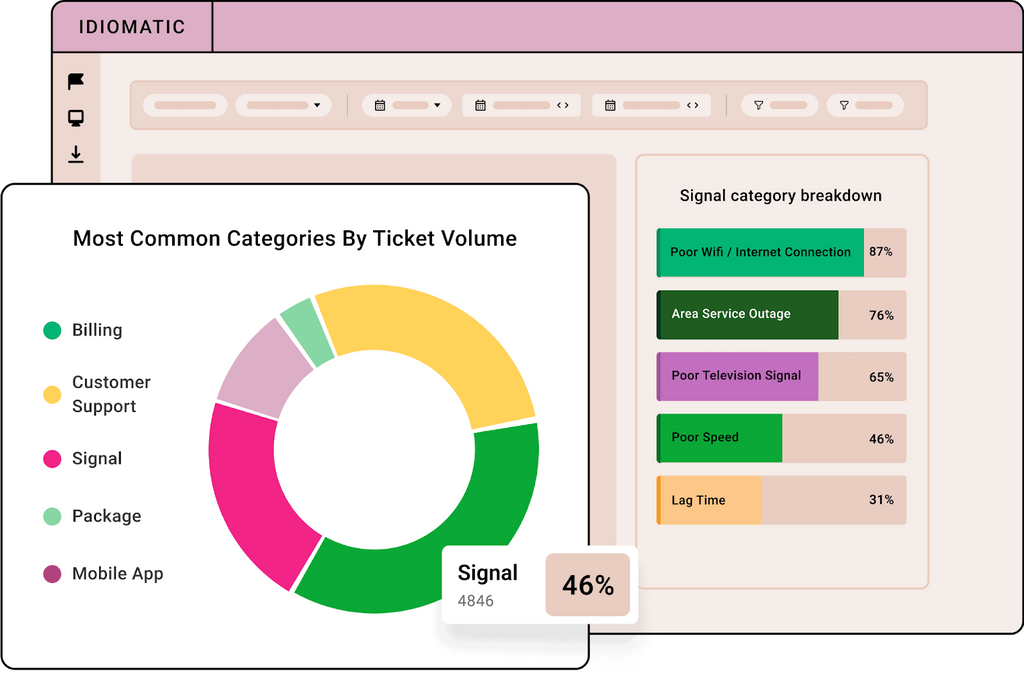To state the obvious, opinions matter in business. There’s a direct correlation between opinion and a whole range of factors—from product and service success to customer loyalty.
The problem is that it’s hard to quantify opinion. Ratings, reviews, and NPS surveys are valuable tools, but it can be difficult to translate these into actionable insights.
Sentiment analysis is a method you can use to add a bit more depth to the customer opinions you’ve been collecting. By analyzing customer reviews and comments, you can get valuable (and specific) insights into what people are saying about your business and make decisions based on that information.
In this guide, Customerly will be giving you a crash course in customer sentiment analysis—including definitions, methods, and best practices for finding success.
Let’s get started.
What Is Customer Sentiment Analysis?
Let’s start simple—what is sentiment analysis?
Customer sentiment analysis is a kind of customer feedback analysis that translates qualitative data (i.e., reviews, comments, survey responses, etc.) into quantitative data. The motivation here is simple—it’s much easier to quantify, analyze, and compare customer feedback when it’s in numerical form.
Imagine you have 1,000 reviews for your SaaS product. Using a sentiment analysis tool, you can mine these reviews using a range of techniques to break them down into averages, ranges, and stats that answer key questions, like:
- How often do customers mention feature A vs. feature B?
- What’s the overall sentiment about your customer service?
- How highly are customers rating their experience with your product?
You can also use customer engagement platforms like Customerly to get insights on customer satisfaction for sentiment analysis:

This quantitative data can help you identify areas for improvement and maximize customer satisfaction.
Types of Customer Sentiment Analysis
- Fine-Grained Analysis: With this type of analysis, you’re categorizing customer reviews, comments, and feedback into one of three categories—positive, negative, or neutral. It’s a good option for keeping taps on patterns and trends in overall customer sentiment since it’s giving you a fairly macro overview.
- Aspect-Based Analysis: This is a more localized version of fine-grained analysis. Instead of just labeling comments and reviews as positive or negative, it first breaks them down into more specific categories—quality, shipping, customer service, etc.
- Emotion Detection Analysis: As the name suggests, this type of analysis uses AI technology to detect the emotions in customer reviews and comments—think: enthusiastic, frustrated, thankful, etc.
- Intent Analysis: This type of analysis goes one step further by not only detecting the sentiment in customer comments and reviews but also identifying their intent (e.g., feedback, complaints, suggestions).
Why Is Customer Sentiment Analysis Important?
Make Improvements to Products & Services
Sometimes it can be hard to understand what your customers and leads actually expect from you. Customer sentiment analysis solves this problem by giving you concrete data on product areas and features that might benefit from improvements.
Clarify Your Product Positioning
On a related note, getting a glimpse into the minds of your customers makes it easier to create marketing campaigns and assets that really resonate.
To give an example, a customer sentiment analysis might reveal that the feature your paid customers are most excited about is an add-on that doesn’t feature heavily in marketing. By building campaigns around this feature, you might be able to boost your conversion rate.
Engage With Detractors & Advocates
Identifying customers who are dissatisfied with your product allows you to take proactive steps to address their concerns and change the narrative. You can use a CRM like Customerly to segment these customers and target them with messaging designed to address their concerns.
Likewise, you can use CRM segmentation to identify advocates and strengthen your relationships with them. This might just lead to more referrals, reviews, and conversions for your product.
How To Perform Customer Sentiment Analysis
1. Use Tools to Gather & Analyze Feedback
The tools you use to perform a sentiment analysis will probably be different from the tools you use to gather the feedback you’ll be analyzing. Customer sentiment analysis is a super specialized field, so the best tools in that arena aren’t usually the best for general-purpose feedback gathering.
Luckily for you, there are tons of options here—look for features like:
- Social media monitoring
- Review aggregation
- Email surveys
- In-app surveys
With Customerly, you can run surveys on a wide range of channels—from email to in-app to live chat (a feature that our client, Nibol, used to help them build customer relationships). Whether you want to create a custom survey or get started quickly with a survey template, Customerly has you covered.
2. Clean Up Your Data
With every data-gathering endeavor, there are bound to be groups whose opinions you value more than others. To make sure your data is as accurate and useful as possible, you’ll need to clean it up by segmenting key groups.
To give an example, a survey response from paying customers is likely much more valuable than a customer on your free trial if you’re currently investigating retention.
Since Customerly survey data is automatically matched with CRM data, you can easily segment responses by any criteria you’d like—from acquisition source to purchase history, lifetime spend, company size, and custom events.

You can even create multi-property segments to get more specific.
3. Define Your Goals
Before you start any actual customer sentiment analysis, it’s important to define your needs and goals.
What are you hoping you’ll learn from the data? Are there any KPIs or metrics you’re hoping to improve? What about industry trends or customer feedback?
These questions will help you pencil in a plan for your analysis that enables a more controlled, reliable outcome.
4. Choose a Sentiment Analysis Tool
Unless you plan on manually tagging and analyzing your data (not recommended), you’re going to need a dedicated customer sentiment analysis tool.

Again, you have a ton of options here, including popular tools like:
As we mentioned earlier, customer sentiment analysis is very specialized, so make sure you choose a tool that supports the kinds of feedback you want to analyze. For example, Brand24 is entirely focused on social media—if the majority of your data is in the form of survey responses, you’ll want to opt for a tool like Idiomatic.
5. Link Your Data Sources
This is a simple one. Usually, linking your data sources is relatively easy, thanks to native integrations.
If the customer sentiment analysis tool you pick doesn’t offer native integrations with your data sources, you’ll need to manually export the data and upload it to the tool.
6. Train & Calibrate the Models
Sentiment analysis tools all use models to identify and interpret key features in pieces of content. The issue is that content varies from source to source—an Instagram comment is very different from a support ticket in pretty much every way.
That’s why it’s so important to train and calibrate separate models for each source you’ll be analyzing.
Sound too technical?
Don’t worry; the process usually involves manually tagging a sample of content from each source, which the tool uses to “learn” how to recognize and interpret that type of content. In some cases, you might even be able to simply create rules for the tool based on your own understanding of what constitutes positive or negative sentiment in each source.
6. Deploy the Model
It’s finally time to start the customer sentiment analysis. Most tools will analyze customer feedback in real-time if they’re integrated directly with your data sources—just set it and forget it.
If you’re going the manual route, you’ll want to pick a set interval to export your feedback data and upload it to the tool. This will depend on a few factors, including:
- How much feedback you’re generating
- How often do you release new products and updates
- How granular you’d like to get with your analysis
As a general rule, shorter intervals are better for analysis.
7. Take Actions Based on Your Results
Since you probably have a backlog of feedback to work with, you can start taking action as soon as you’re generating results.
Return to the goals you set and use the initial data to form a hypothesis (i.e., an initial hunch for how to improve).
Once you have a hypothesis, it’s time to test it. A/B and multivariate testing are two of the more reliable ways to test how effective your changes will be before going live. Based on the experiment results, you can start to make targeted improvements that customers will love.
Conclusion
Customer sentiment analysis helps you get a finger on the pulse of your customer base. When you understand what customers really think and feel about your product or service, it’s much easier to adjust your approach and improve outcomes.
At Customerly, we’re passionate about giving businesses the tools they need to build strong relationships with their customers—all in one place. Our platform combines CRM, marketing automation, service, and surveys into one, enabling you to collect and action customer data easily.
Want to see Customerly in action? Sign up for a 14-day free trial to get started.
Sign up for a 14-day free trial
Combine CRM, marketing automation, service, and surveys into one


